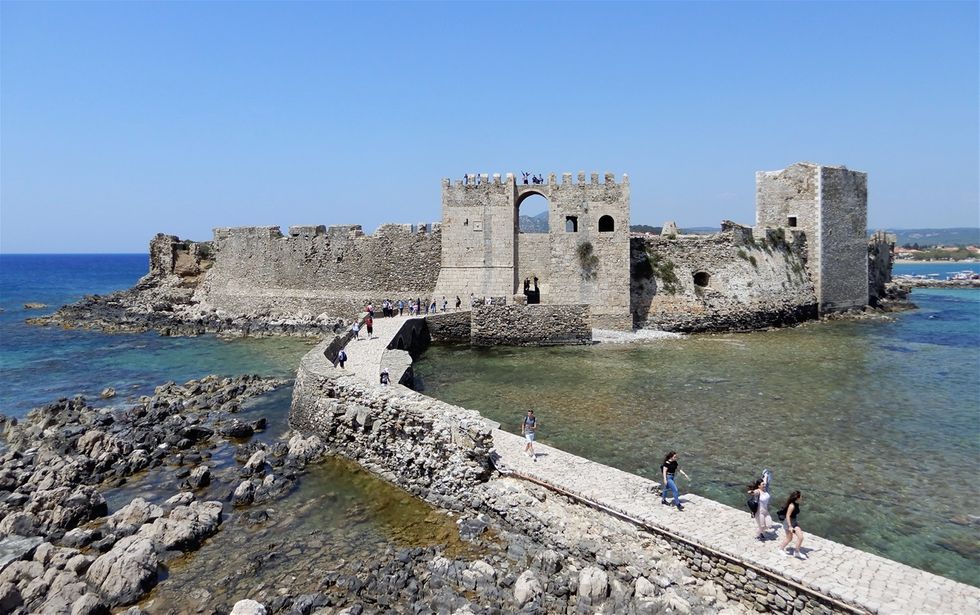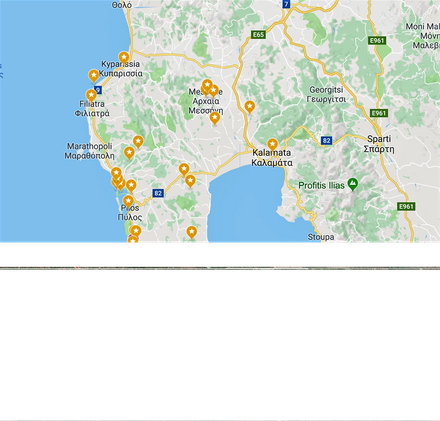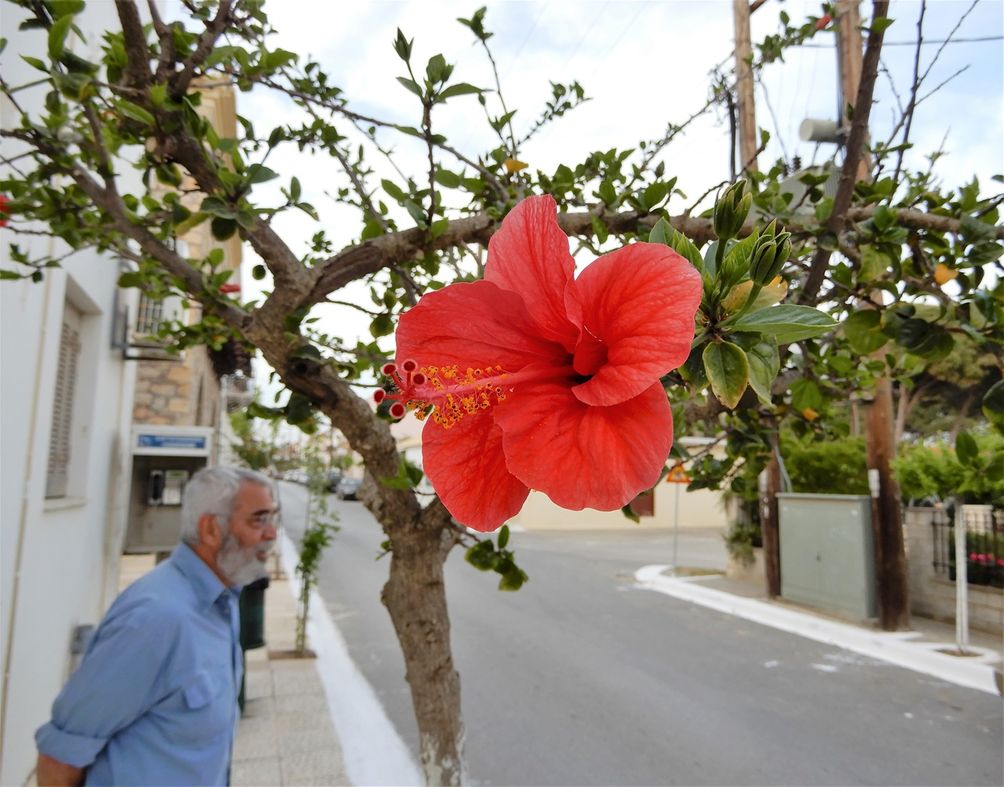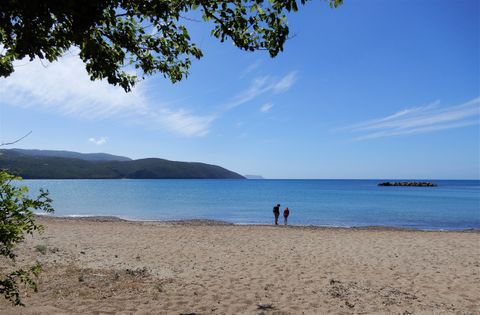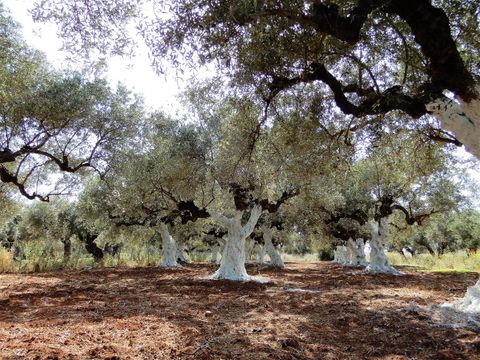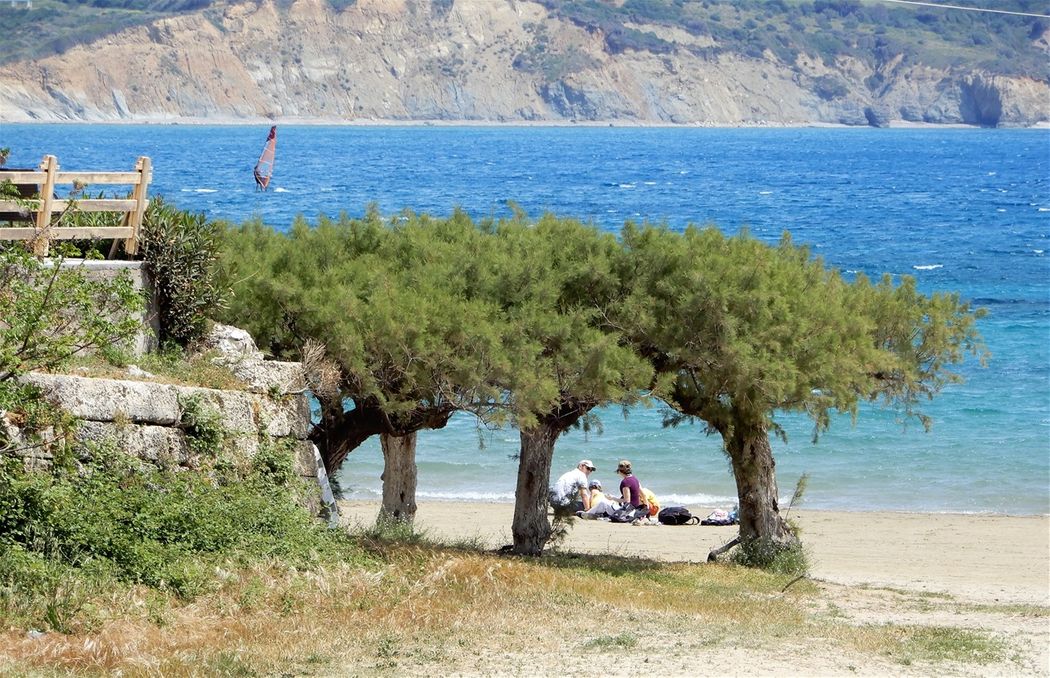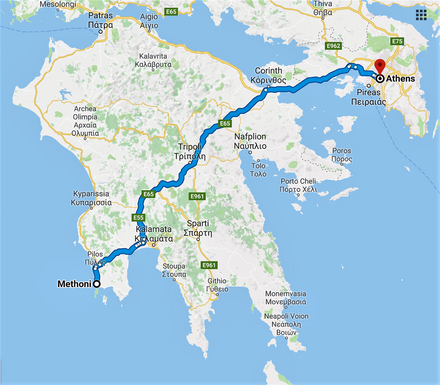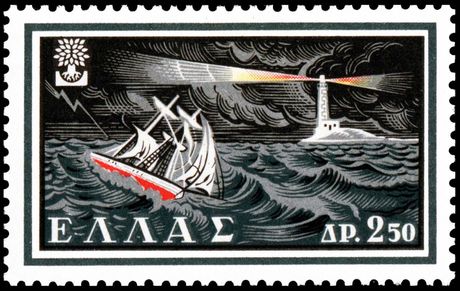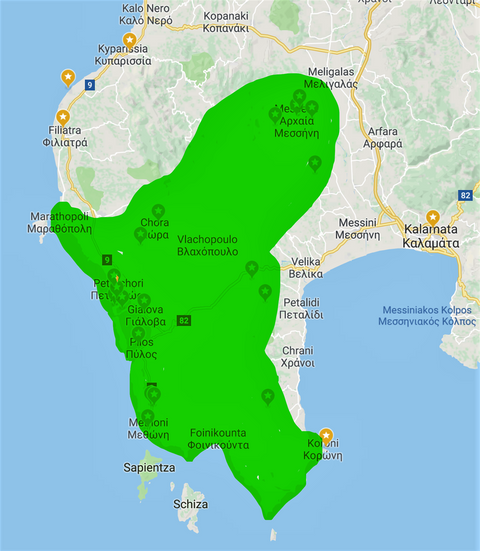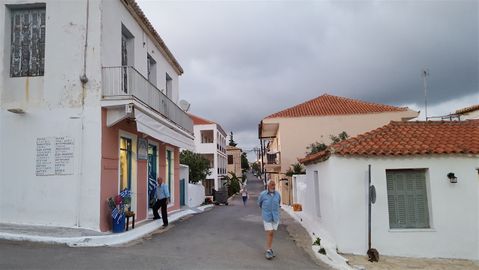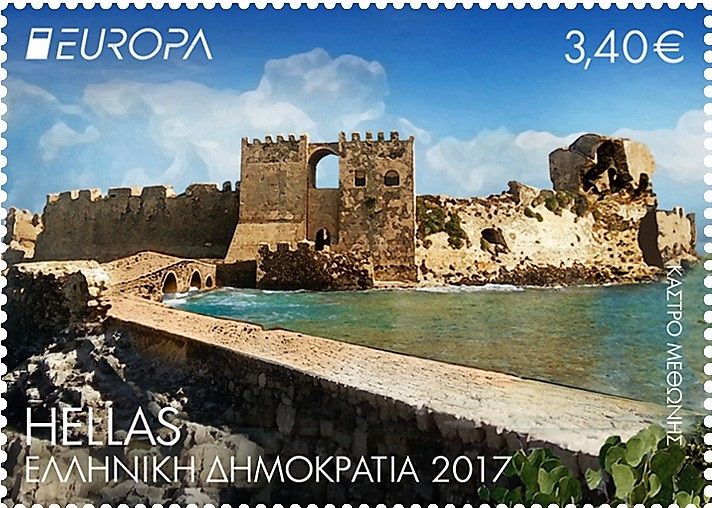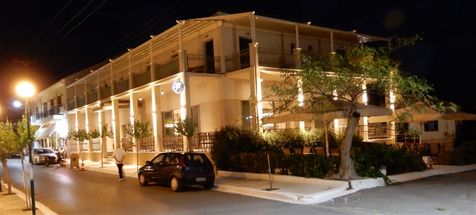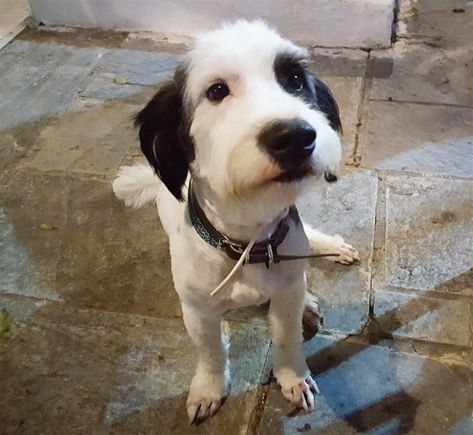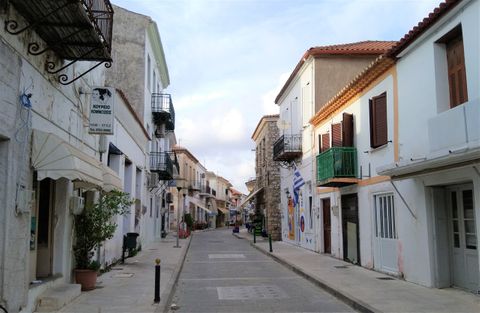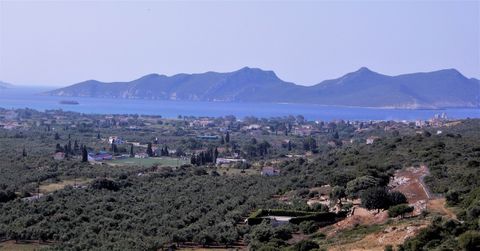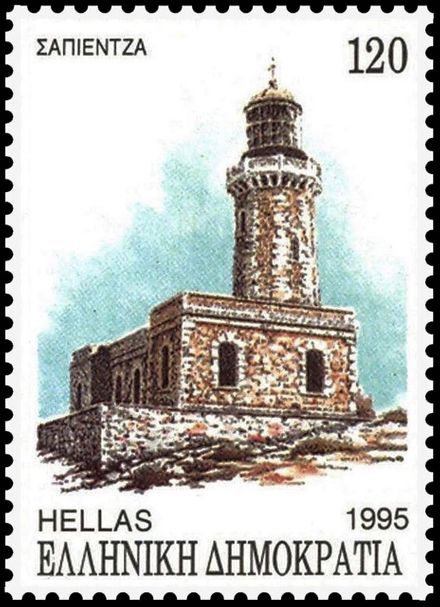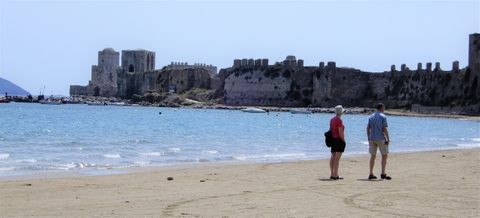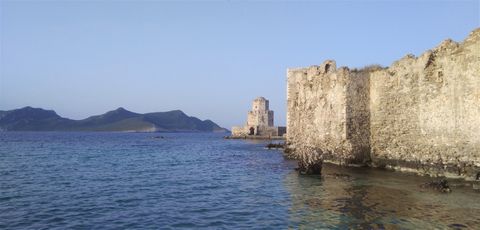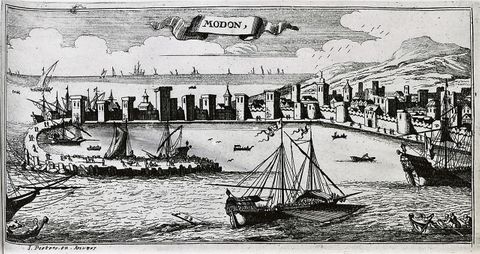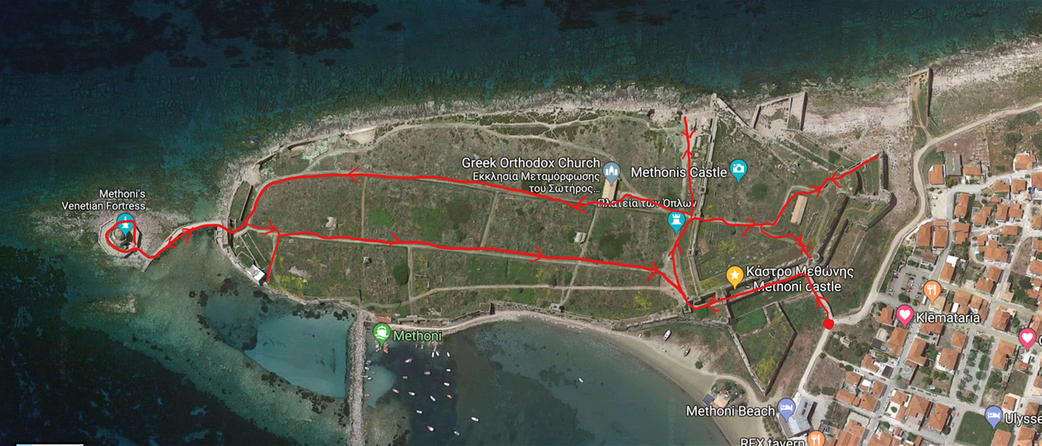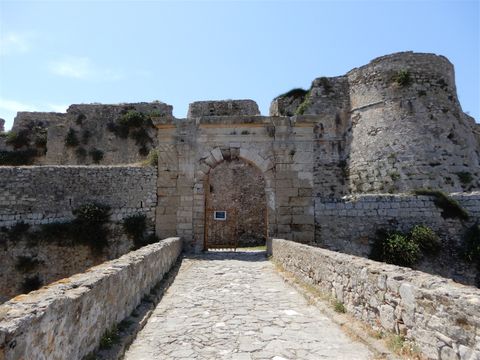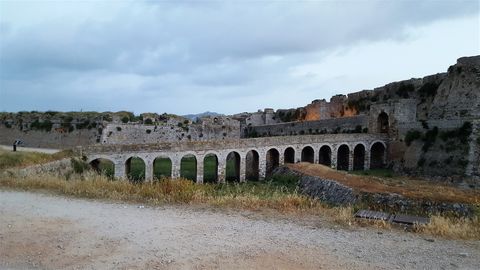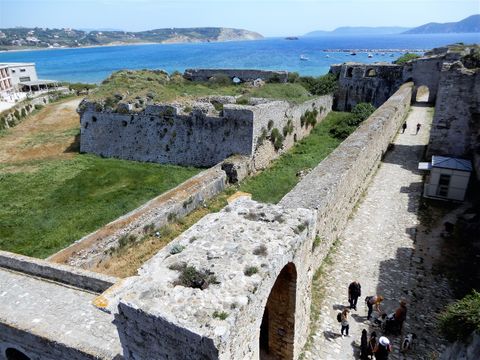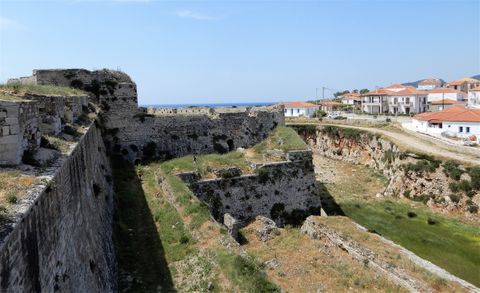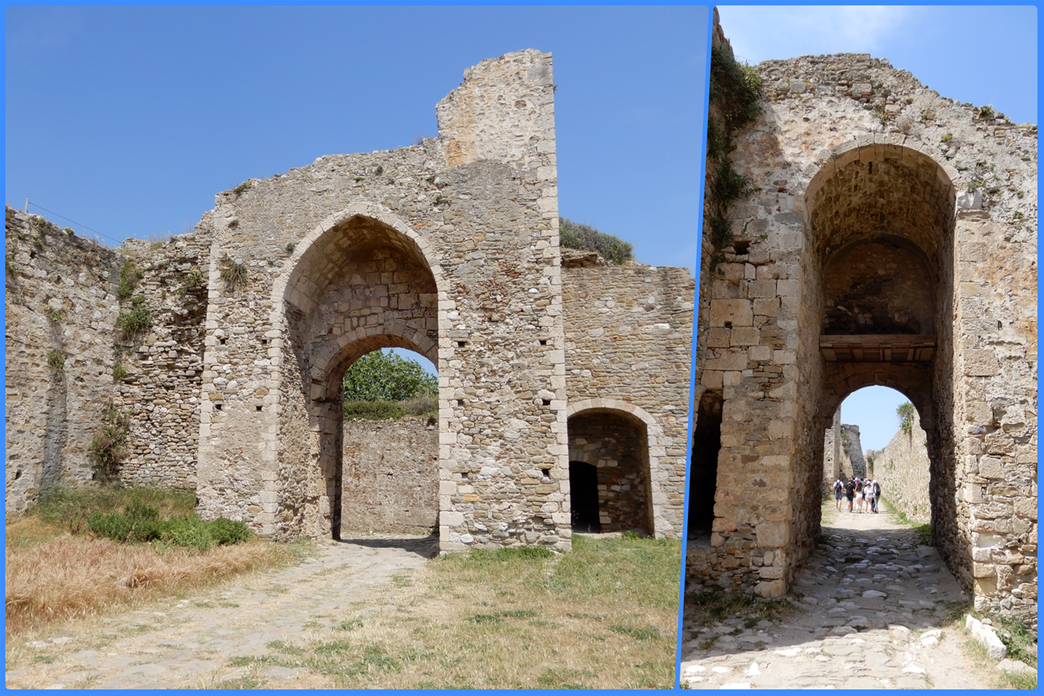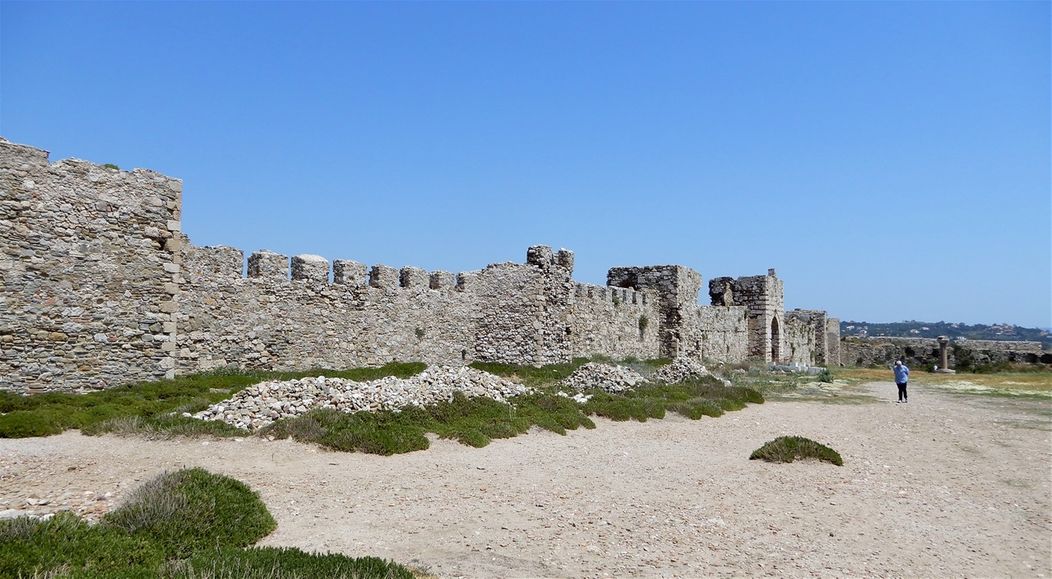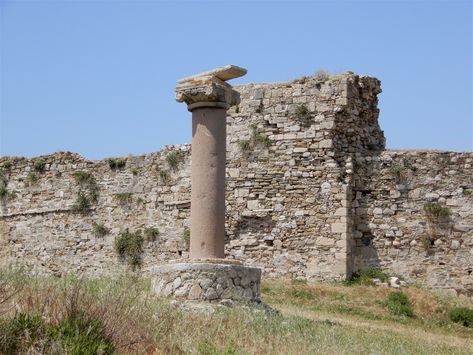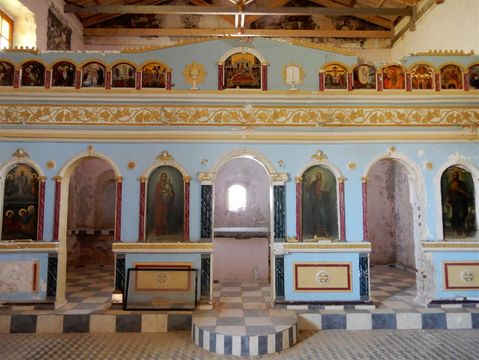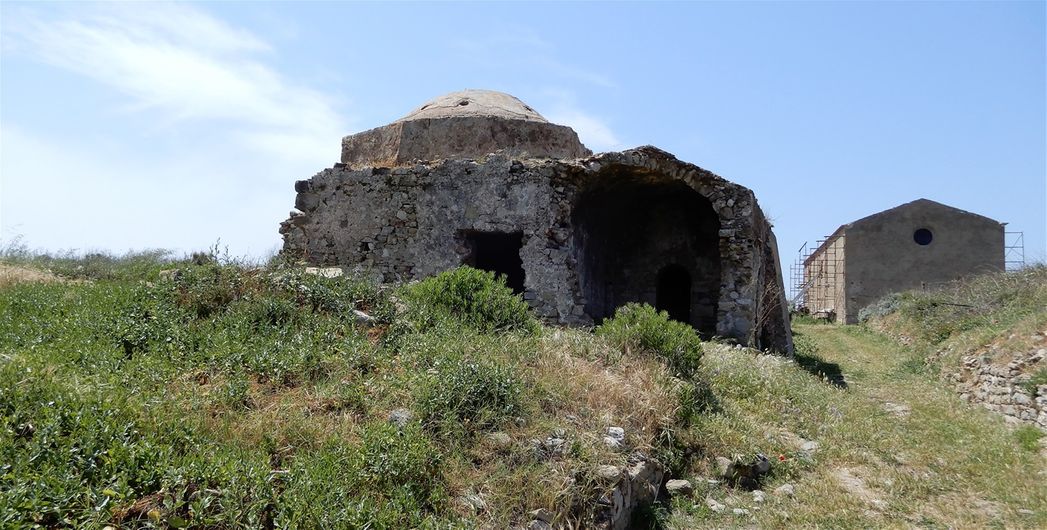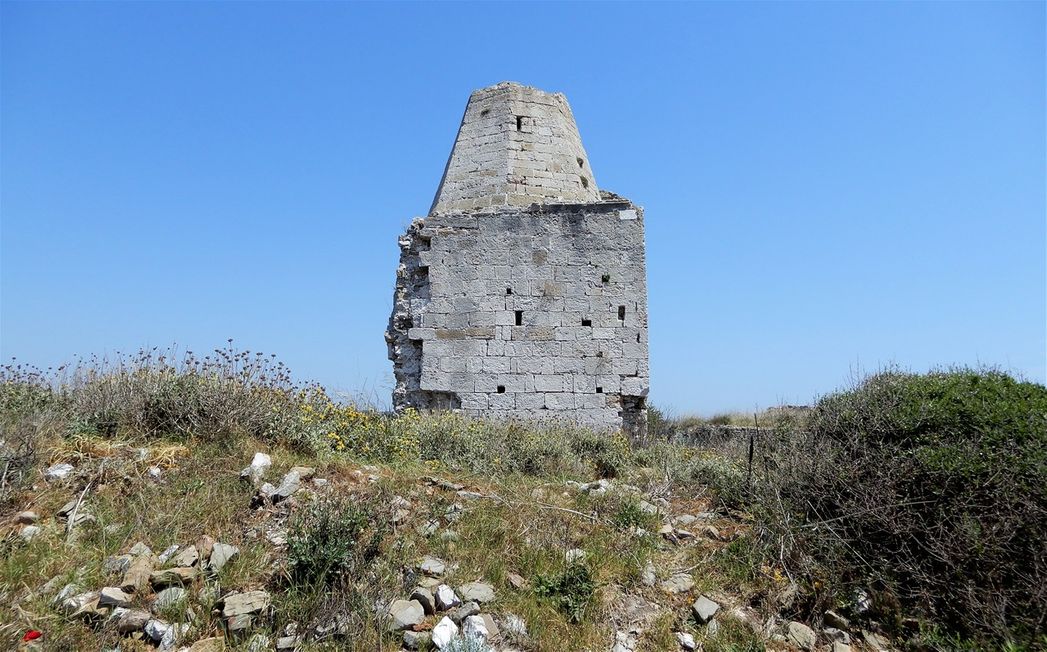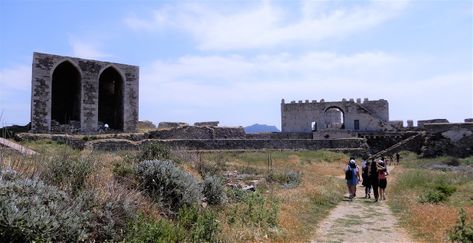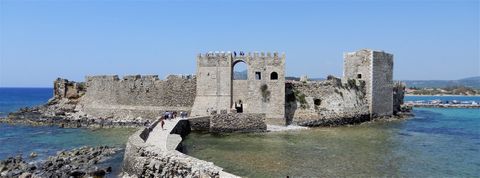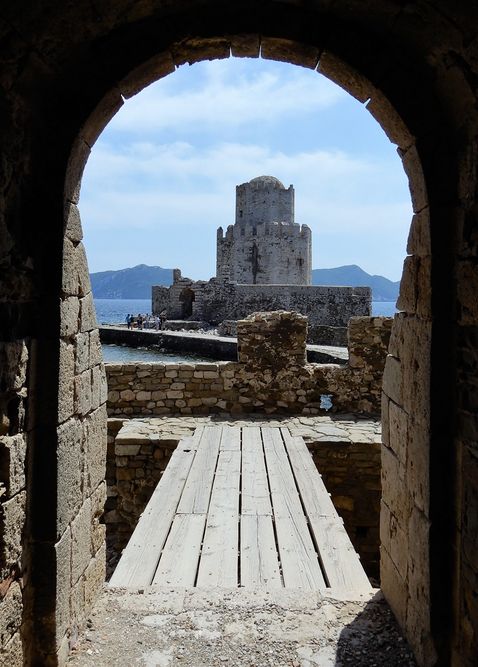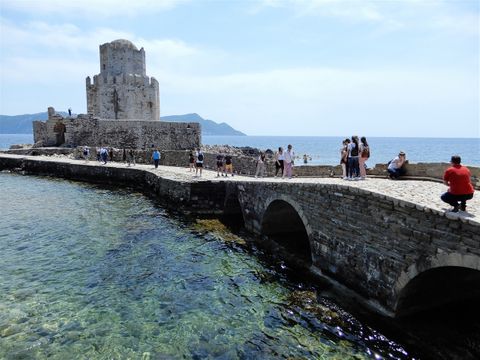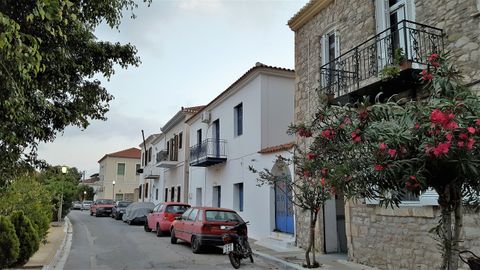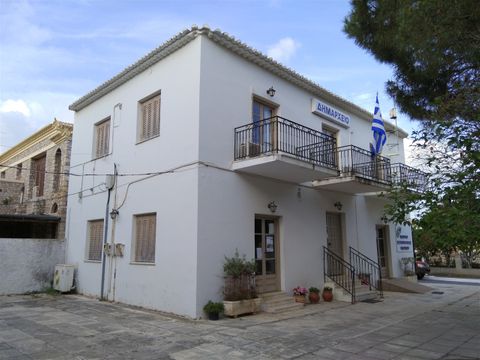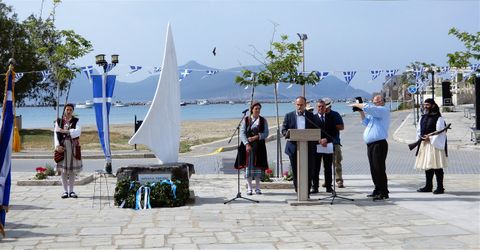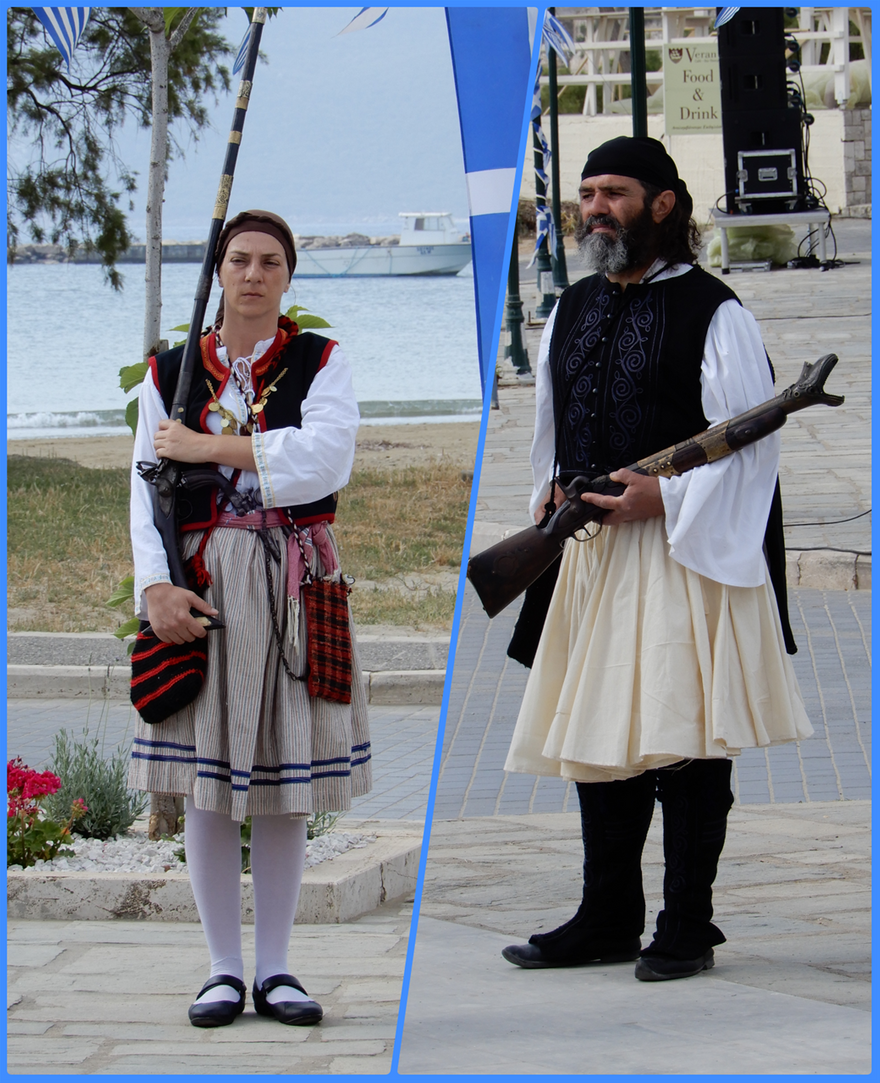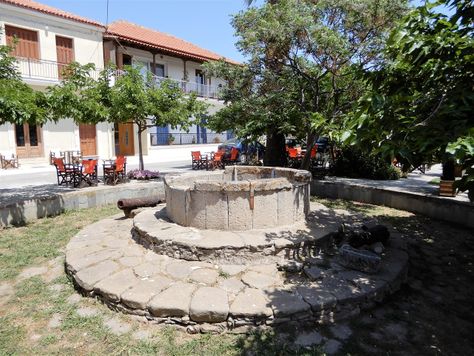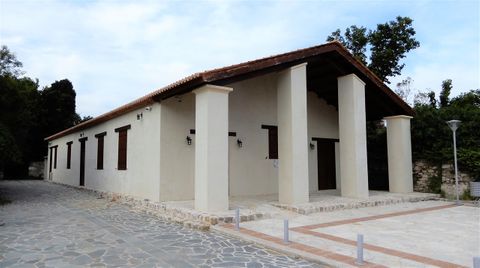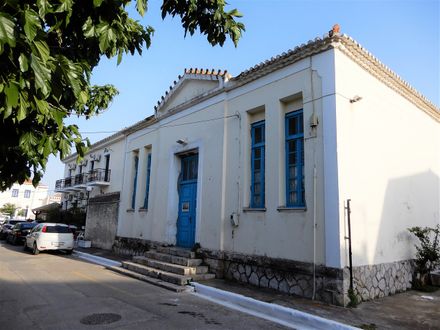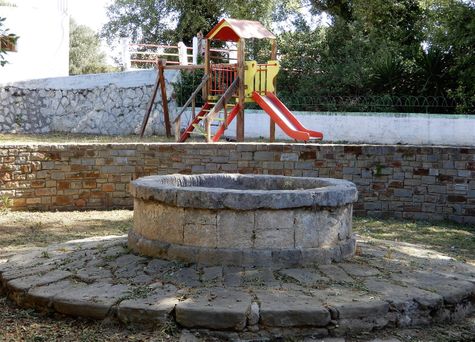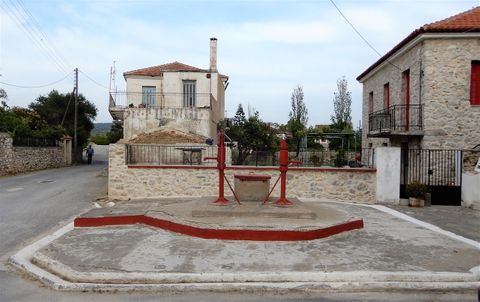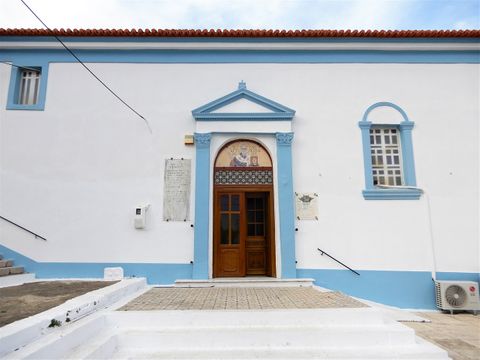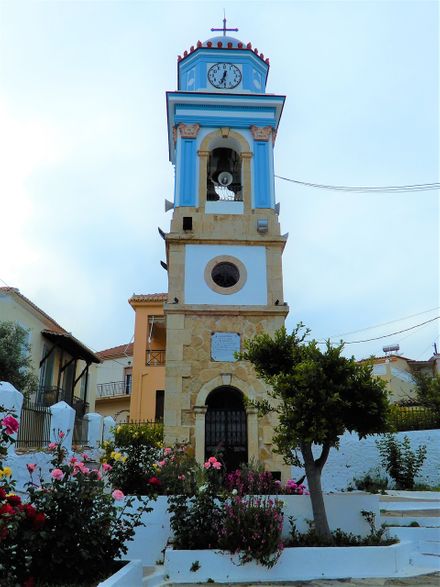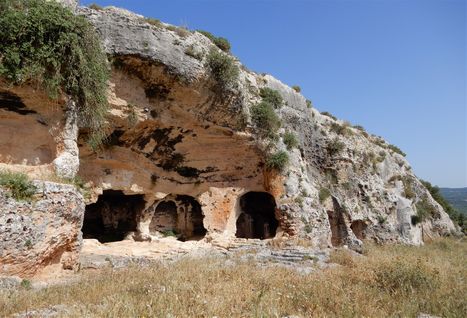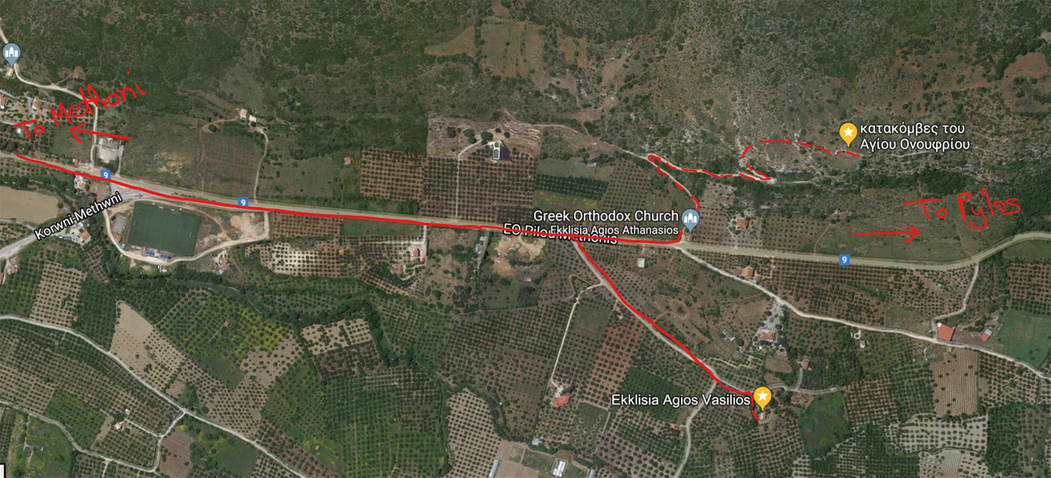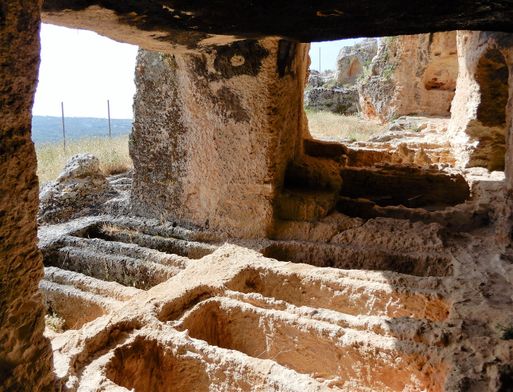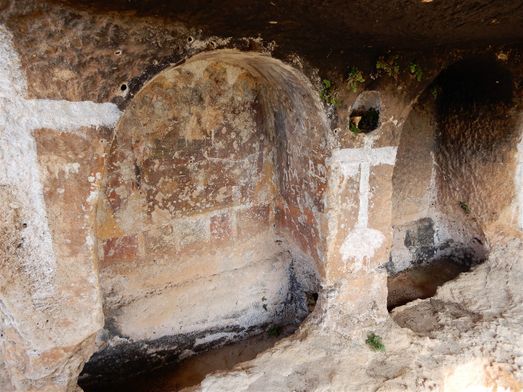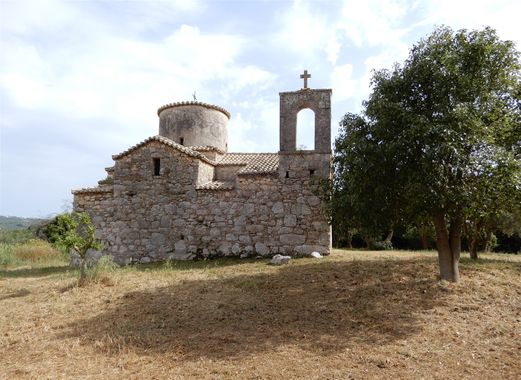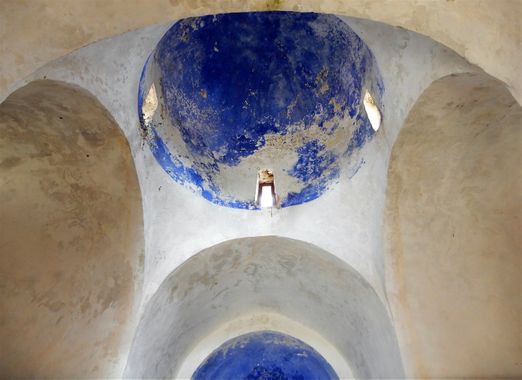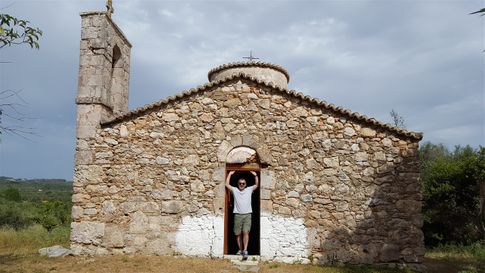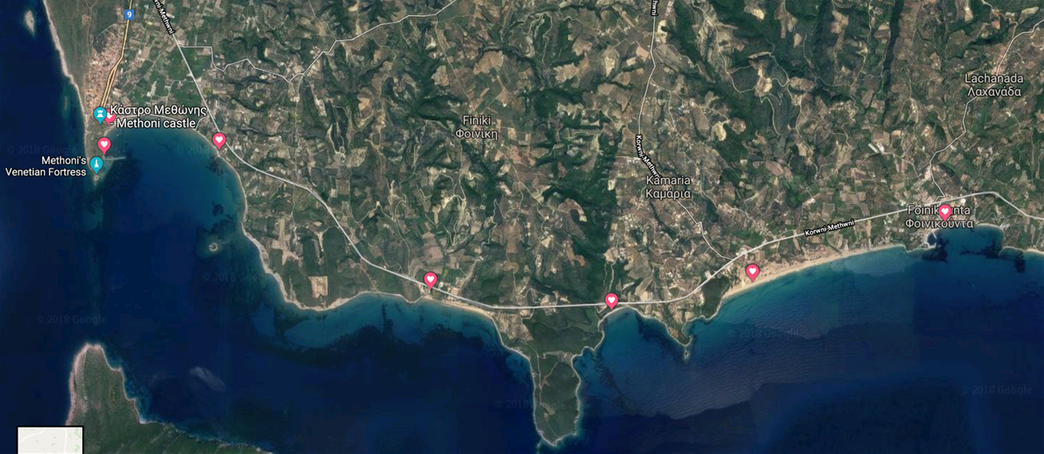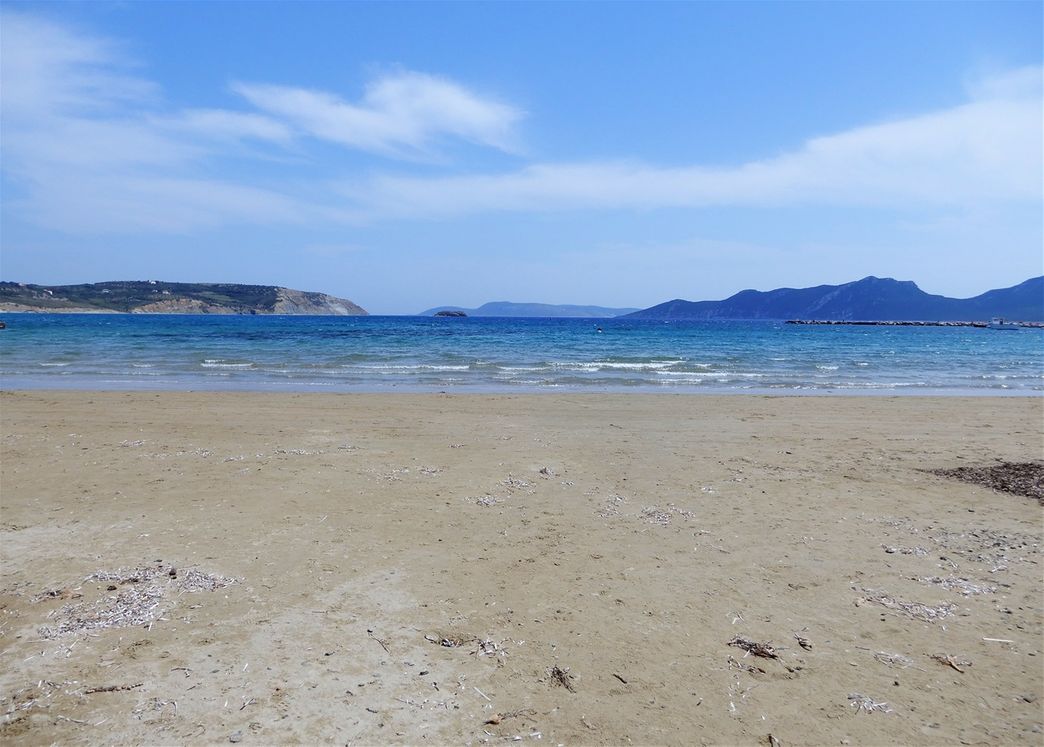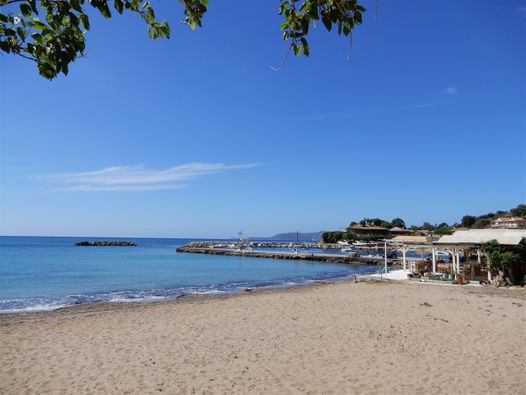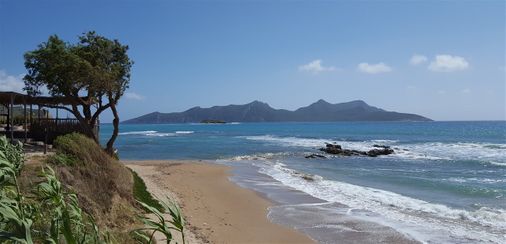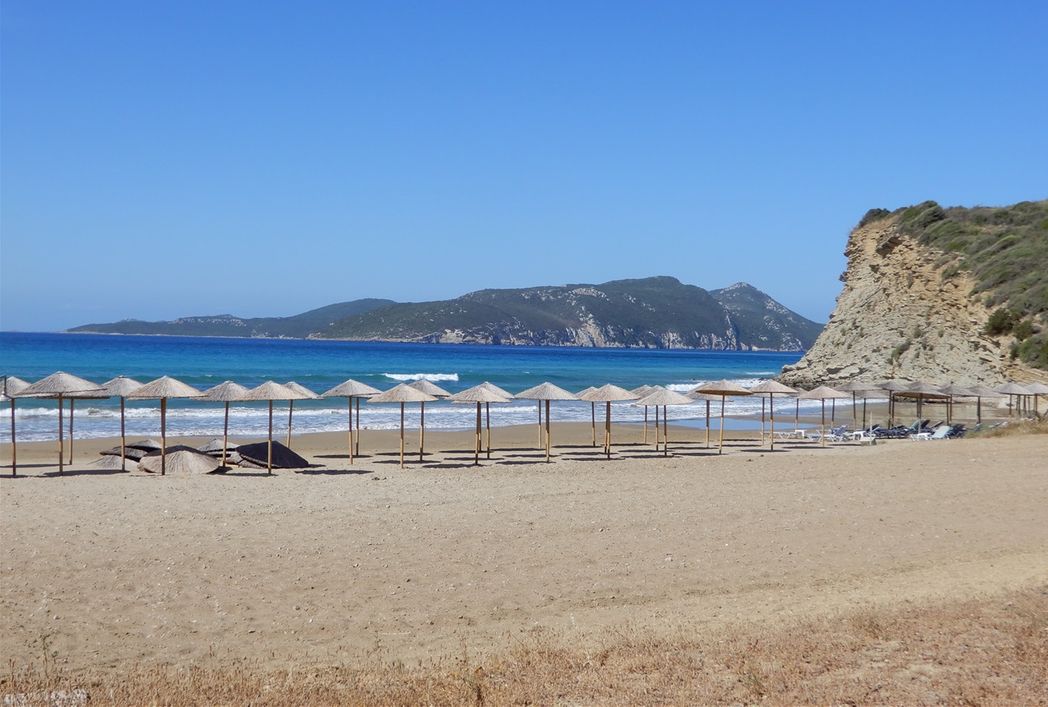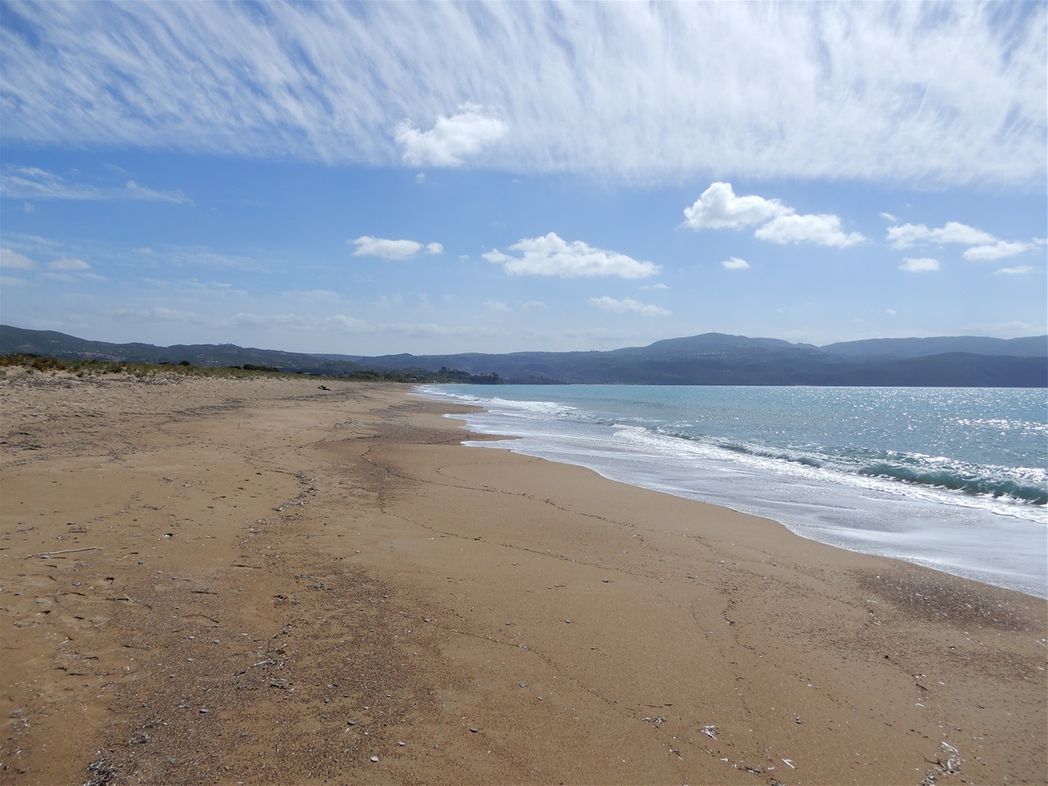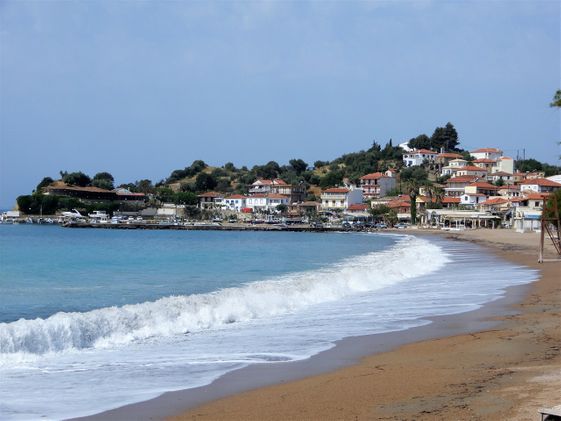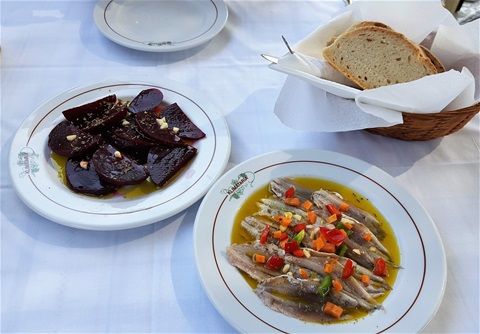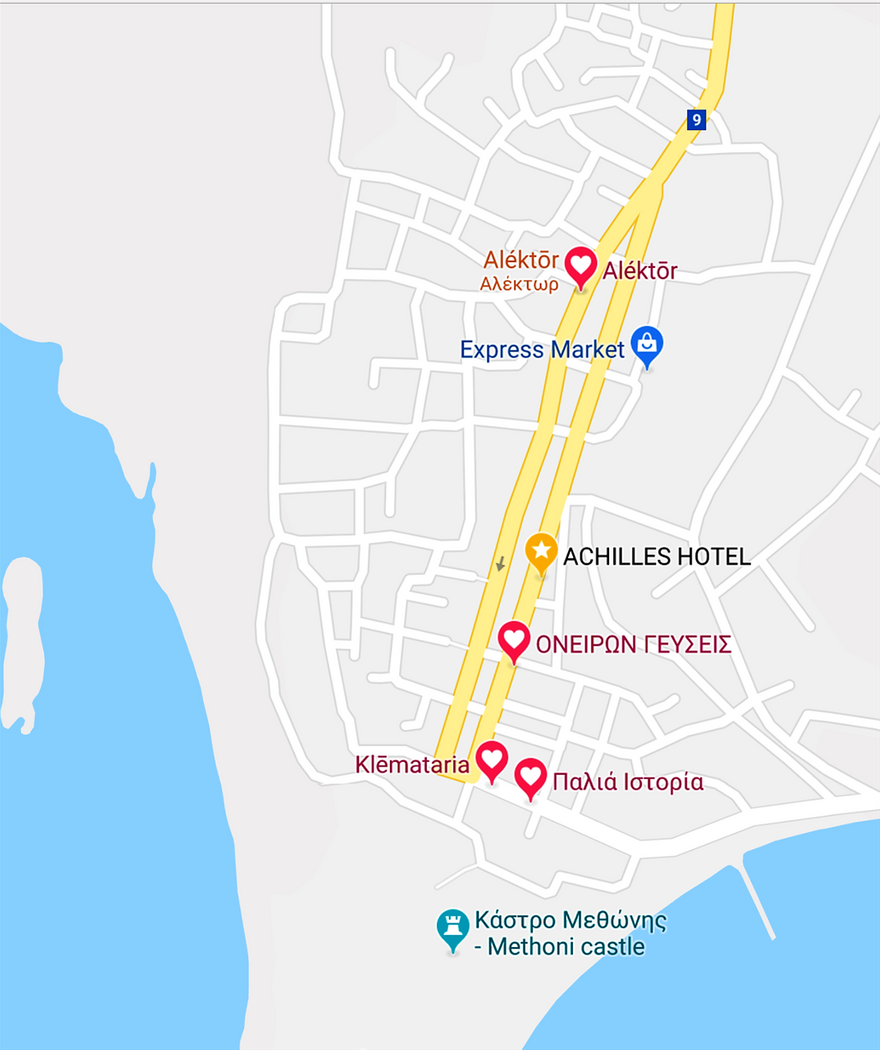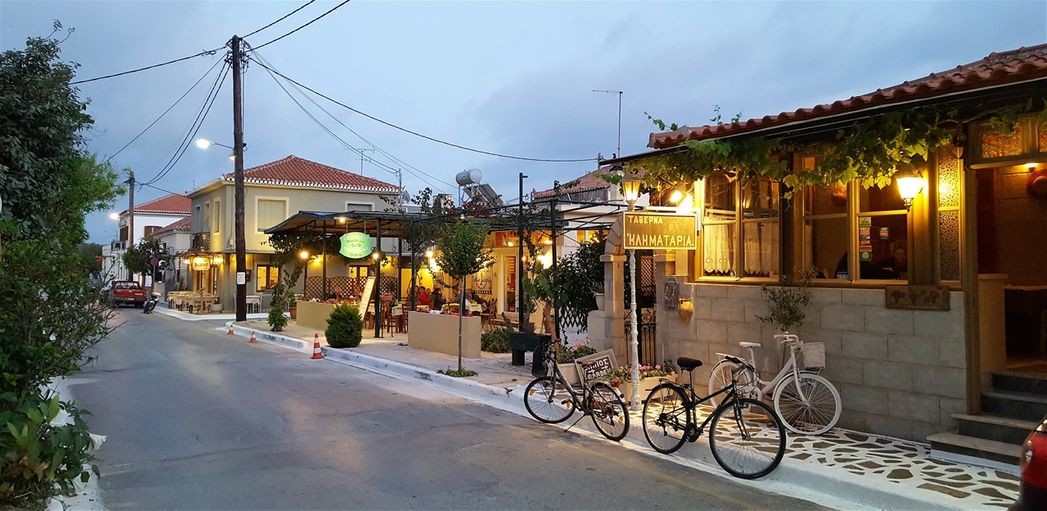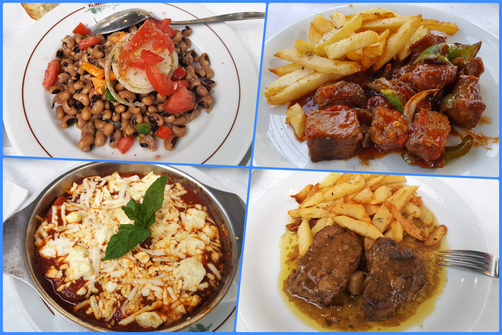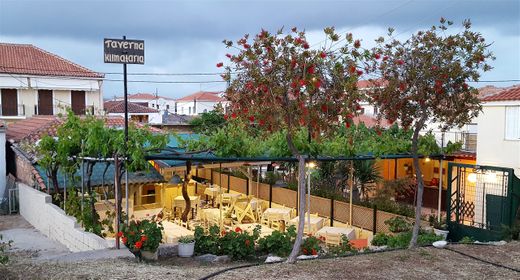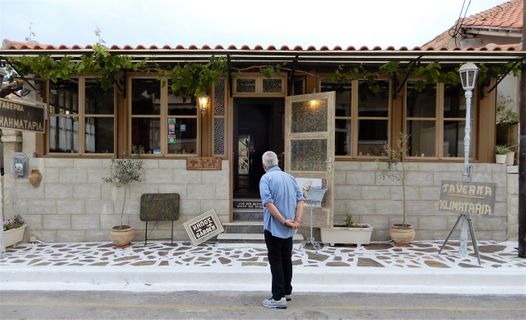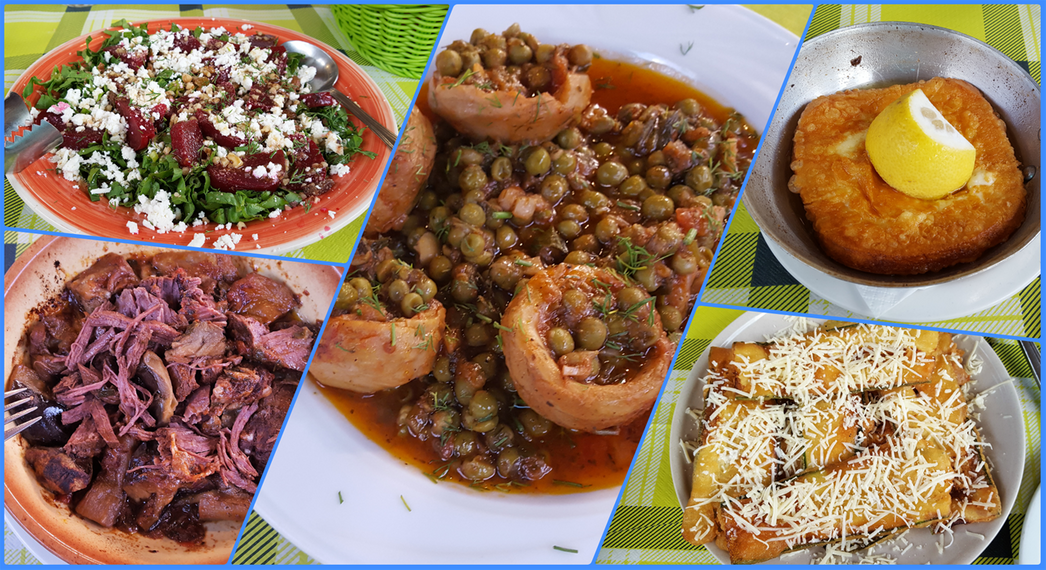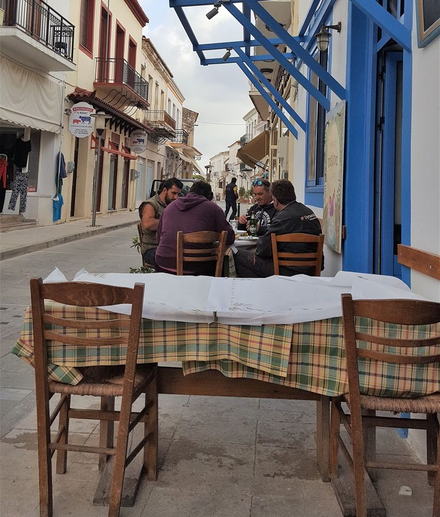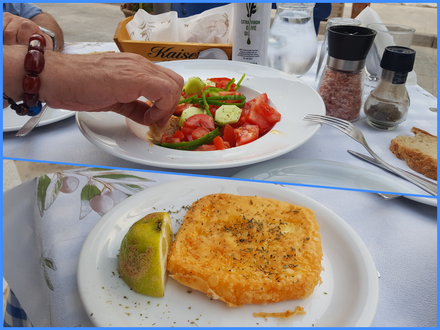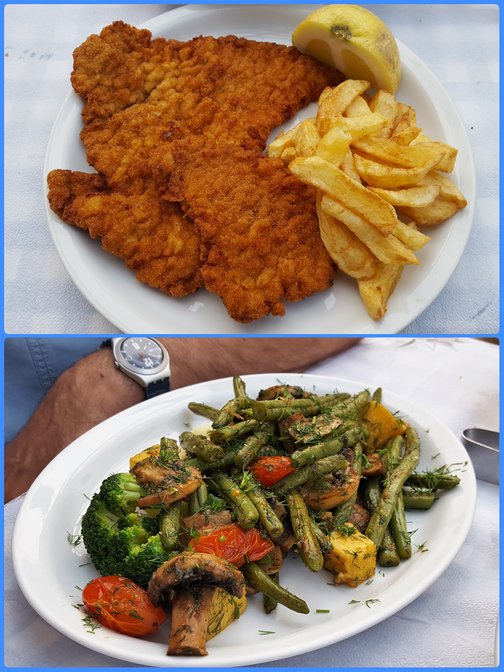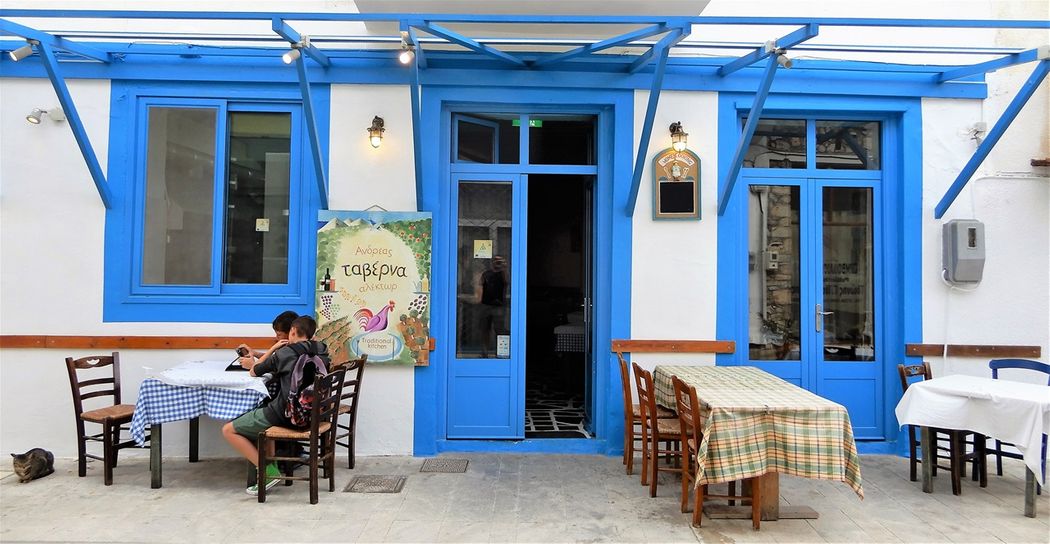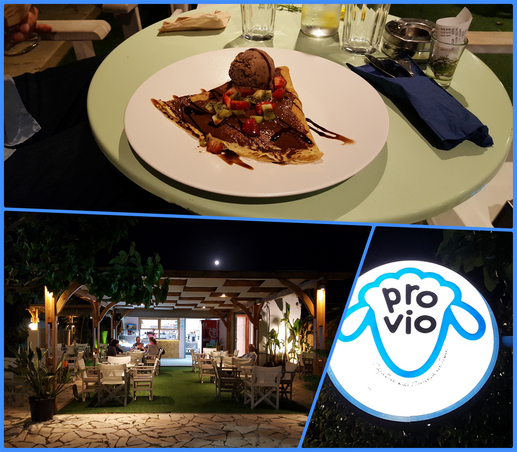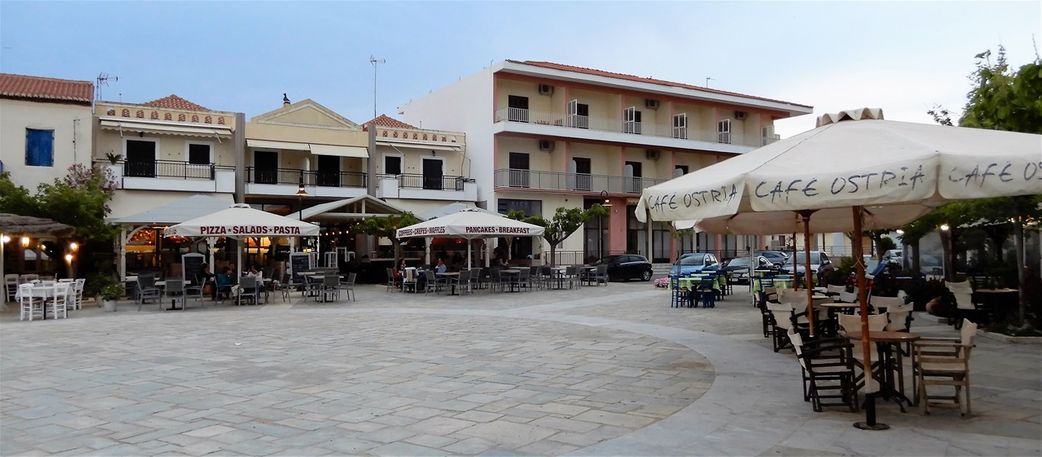Messenia
Blessed by Gods, Loved by people…
May 2018
Introduction
Messinia on the map.
Messenia is located at the southwest part of the Peloponnese, so it is the furthermost part of the peninsula (from the Athenocentric point of view).
I decided to visit the area for a week and stay at the “Land’s End”, which is the mesmerizing town of Methoni. The idea was, to do this trip in early May, while the weather is still cool (I dislike hot summers in Greece), beaches and towns are not crowded yet and the roads are full of blossomed hibiscus trees. From Methoni I would do daily excursions by car to cover as much of the southwest country as possible.
The streets of Methoni are lined with hibiscus trees!
Nowhere else in Greece, the authentic Mediterranean landscape can be represented so clearly as in Messenia, maybe the most beautiful region of the Peloponnese.
Messenia is a country with very long history and has played an important role during the Greek Independence struggle against the Ottoman Empire during the 19th century. Even though it has thrived throw-out the whole Greek history, it is best known as the place where the so-called Nestor Palace, which enchanted the whole Mycenean world almost 3,500 years ago.
Messenia has some of the best beaches in Greece.
Olive trees cover every plane, every field and every hill in Messenia. Olive groves cover even mountains and give to the country this amazing green-silver color we all love in this part of the world.
A country covered with low mountains and rolling hills coated by vast olive groves, a country whose fertile soil made its inhabitants wealthy and conquerors eager to rule over them, Messenia has numerous castles and charming old towns, unique archeological sites, byzantine churches and monasteries, hidden coves and endless sandy beaches, sea caves and picturesque fishing villages, uninhabited islands and turquoise waters.
You can wander through ancient olive trees, which give the country that unique silver-green color, or walk on stone-built trails and pathways leading back in time, linking nature with people and their traditions.
One of the biggest naval battles took place at the gulf of Navarino, a lagoon-like bay, outside of which are the deepest waters of the Mediterranean. It is there, “Twenty Thousand Leagues Under the Sea”, where a very important physics experiment took place. In that experiment, called “Nestor”, I was honored to participate as a physics student at the University of Athens.
Mediterranean at its best.
Arriving to Methoni
Methoni is about 290 km from Athens. It takes 2.5 hours to drive on the highway (you will need 15-20€ for tolls) to Kalamata, which is the capital city of Messenia (240 km) and almost another hour to drive the last 50 km on the provincial road to Methoni.
Note: Be aware that on the highway between Tripoli and Kalamata there are traffic police blocks checking for speed. I got a ticket, as I was going with 153km/h on an 130km/h limit highway.
The road from Athens to Kalamata and Methoni.
I love this 1960 Greek Postage stamp. I like to think of it as an allegorical image of Greece as a sailing boat into a storm...a beacon of hope is there, but far away.
Greece, is a very beautiful country. It has everything one would look for: high spectacular mountains, the bluest seas one can encounter on this planet, countless charming islands, rich history that goes back thousands of years, a unique cuisine, very important antiquities that dot the whole country, marvelous weather for all tastes, and much more.
Nevertheless, it seems that she is not able to take advantage of all these. Whatever human touches, submerges into anarchy that spoils almost everything. Disorder, waste, aesthetical pollution, mischief, confusion and people who care only about themselves and never for the public wellness. I call all these “the Greek misery”. And for me this is unbearable and hurts me deeply.
Messenia, of course, has not escaped from this misery either. But, the good news is that the area defined by the imaginary quadrilateral Methoni-Pylos-Chora-Ancient Messini-Koroni could be well out of all this. It is like an invisible fence protects the area from all the modern Greek misery, at least to the extend this is possible.
I should stop grumbling, though, and let me introduce you to a lovely country.
Nevertheless, after Messenia I spend a week in Napoli, Italy. When I came back from Napoli, everything in Greece seemed to me very tidy and very clean!! So, everything is a matter of perspective.
The area in green is what I consider the most beautiful part of Messenia, the part that has escaped "Greek Misery".
PART 1: METHONI
The town
Methoni is certainly the “jewel on the crowd” of Messenia and it has the charm very few towns have in Greece. It is tranquil (not during the peak summer season, though), well organized and clean, most of its two-storey houses have green orchards, its tavernas and cafes are pleasant, its huge castle is like coming out of a fairytale and certainly it is a town that has escaped “the Greek misery”.
Typical Methoni street.
Methoni Castle Sea Gate. 2017 Greek postage stamp.
“Achilles Hotel” in Methoni.
I have chosen to stay at a very nice little hotel (13 rooms) located just two blocks away from the castle and the sea (anyway, everything is only two blocks away from anything else, as the town is small), on Eleftherias Square, in the very center of the town. “Achilles Hotel” is a modern hotel with nice rooms characterized by ergonomics, functionality, modern comfort and aesthetic excellence.
All rooms have big private balconies, but I got one of the (only two) corner rooms, which have two balconies.
My room had all the necessary amenities you expect from a 3-star hotel and lots of electric outlets to plug in all my gadgets: an outlet for my phone, an outlet for my tablet, an outlet for my laptop, an outlet for my camera, an outlet for my smart watch.
I hate when I stay at hotels which have barely one electric outlet in the rooms, and that is only for the TV!
Achileas, the hotel dog I fell in love with.
Methoni and its castle from the edge of the bay.
Methoni is located on an elongated peninsula, the tip of which is occupied by a venetian castle the size of the rest of the town. Thanks to its strategic position, Methoni and its castle has been an important trade and marine center for the Venetians during the medieval years. The castle is the most impressive fortress in the Peloponnese and it is separated from the mainland and the town by an artificial moat.
The town itself is constructed around two streets, the only streets that are long enough to traverse the whole town from south to north and lead the visitor thru the city and into the castle entrance. The first of these two streets, Mezonos Street, is a two-directional road serving both incoming and outgoing traffic. The other street, Episkopou Grigoriou Street, is the “market street” (or the “upper street”), a slab covered street which, in the evening, closes to traffic.
On the south west part of the town opens a huge, crescent like beach.
Sapientza island
Episkopou Grigoriou Street, is the “market street”.
Across Methoni, emerges the ever-green island of Sapientza, which is home to rare species of flora and fauna. The network of trails crossing the island leads into an ancient arbutus forest, a unique ecosystem, home of muffle (wild sheep), wild goats (kri-kri), partridges, pheasants, and many other species. You can reach the island by boat or canoe. Near its coasts several shipwrecks are lying with great archaeological value.
Methoni and Sapientza Island at the background.
On the south-east part of Sapientza there is an important historical and architectural landmark worth visiting: the lighthouse.
The lighthouse was built in 1885 and the height of its stone tower is 8 meters. It was constructed at the request of Queen Victoria of England.
The first lit of the beacon took place on September 1, 1885. Today it is powered by photovoltaic systems.
A 1995 Greek Postal stamp of Sapientza Lighthouse.
Methoni Castle
Methoni castle seen from the town beach.
The Methoni Castle is the main tourist attraction of the area and can be visited any day of the week (except Mondays) from 9am to 3pm only (entrance fee: 2€).
Unfortunately, although tourism is the only heavy industry left in Greece and regardless of the existence of many important archeological sites, the Ministry of Impotence…. sorry of Tourism I meant to say, has not managed to have enough employees so they keep the sites open longer hours. It is so frustrating to arrive at an archeological site after long hours of driving or walking and find the entrance locked!
So, be prepared and plan in advance your trips.
A bit of history
The castle of Methoni and Sapientza island seen from the town beach.
In the classical years, the castle was a simple, plain fort. Pausanias and Strabo identify the ancient Methoni with the "full of vineyards Pidassos" (αμπελόεσσα Πήδασος), which Homer refers to as one of the seven cities that Agamemnon offered to Achilleas, trying to persuade him to return to the battle during the siege of Troy.
Later, during the byzantine era, it grew bigger and conquered by the Franks of the 4th crusade in 1205. With the treaty of the island of Sapientza (1209), the castle was given to Venetians, which they turned into the fortress we know today, more or less, in order to promote their commercial interests. This period is called the “First Venetian Era”.
View of Methoni. 1686. (The Gennadius Library - The American School of Classical Studies at Athens).
In August 1500, the castle was conquered by the Turks and many of its residents flee for Zakynthos, Kefallonia and later for Lower Italy.
In 1532, the emperor of German and Spain, Charles the 5th, wanting to create a distraction and provoke the sultan Souleiman the Magnificent, he sends armed forces to the Peloponnese headed by admiral Andrea Doria. Doria's expedition was a failure and he had to leave Methoni in 1534.
The Venetians came back with Frank Morozini, they conquered the castle in 1685 and they kept it till 1715. This period is called the “Second Venetian Era”.
The Turks took it back and stayed here until 1828, when the castle is liberated and given to the Greek government by the French general Maison.
A walk in the castle
Suggested Castle walk.
The central entrance of Methoni castle.
The central entrance of the castle is located on the north side, the only side that borders with land.
It is a monumental renaissance construction, decorated with Corinthian style pillars in relief, accompanied by spears and banners. Built around 1714, it is included in the large building program undertaken during the Second Venetian era.
The main entrance is approached by a stone bridge over an artificial, deep moat.
This stone bridge, that consists of fourteen arches, was built over the moat by technicians of the “Expedition scientifique de Moree”, which accompanied general Maison, in 1828. Before that the bridge was made of wood.
The stone bridge leading to the main entrance of the methoni Castle.
Two great bastions are reserved on both sides of the gate: the Bembo Bastion, built during the 15th century to protect the northwestern part of the castle and the Loredan Bastion, built in 1714, to protect the vulnerable northeast part of the castle.
The north side of Methoni Castle took its final shape in the early 18th century and it retains it until today. The height of the wall on this side reaches 11 meters.
The road that starts from the main entrance, leads from a second gate and then a third, inside the castle, into the southern precinct of the castle, where the houses and all public buildings used to be. This section is divided from the northern precinct by a fortified wall with five towers.
The main gate (at the forefront) and the second gate (on the upper right part of the picture). In the upper center is the Loredan Bastion.
The Bembo Bastion.
The road that starts from the main entrance, leads from a second gate (right) and then a third (left), inside the castle, into the southern precinct of the castle.
The northern precinct, which was the acropolis of the castle has no buildings of any interest to the visitor, but the views from its walls to the town and over the sea are unique.
The view of the southern precinct from inside the northern one.
The southern section is divided from the northern precinct by a fortified wall with five towers.
The area just after the entrance into the southern southern is the Square of the Arms.
In the center of it stands a monolithic (made of rose granite) column coronated by a limestone capital with anthemia and scrolls on its four corners. On the top of the capital rests a rectangular plaque bearing the date 1493/4. The column is commonly known as “the column of Morosini”.
The "Morosini column”.
Square of the Arms-1837. (Ludwig Köllnberger. National History Museum.)
Behind the column stands the “Church of Transfiguration” with its stone belfry. The porch of the church is located at the middle of its north side and consists of two white marble columns crowned by a marble pediment.
On the road leading south to the Sea Gate, there are two ottoman bath complexes (hamam) and also the base of a mosque minaret. The mosque constructed by the ottomans on the site of the byzantine church of St.Sophia.
Inside the “Church of Transfiguration”.
The ottoman hamam and the “Church of Transfiguration” on the right.
The minaret base.
At the south end of the castle stands the enormous Sea Gate which leads to a small fortified harbor.
Before the gate, on your left hand, stands the impressive restored part of a public building with 2 huge arched "windows".
The Sea Gate comprises of two tall towers and a bridge which connects them on the top. It is also known as Saint Mark Gate, as three venetian crests are supposed to be preserved on it, among them the lion of Saint Mark…. But I did not manage to locate them.
The Sea Gate seen from inside the castle, and on the left what has been left of an impressive public building.
The Sea Gate seen from the Bourtzi.
Bourtzi seen from the Sea Gate opening.
An arched stone causeway connects the Sea Gate with the Bourtzi.
Bourtzi consists of an octagonal tower, surrounded by a low octagonal wall. The tower is a two-storey construction and it is covered by a semicircular dome. Stone stairs lead to the first floor of the tower, where a chamber is formed with cannons perimetrically placed.
The construction of the fortress at Bourtzi began shortly before 1500 by the Venetians and it was completed by the Ottomans in the 16th century. According to the Turkish traveler Evliya Çelebi, the fortress dates from the reign of Suleyman I the Magnificent (1520-1566), shortly after the fall of the Venetian Modon (Modon was the Venetian name of Methoni).
Bourtzi was not used only as a fortress and a lighthouse, but also as a tower-prison, after the arrival of Ibrahim at Methoni in 1825, where hundreds of prisoners were tortured and found horrible death.
Here, in October 1825, defeated by the hardships and cholera, died "the Saint of Methoni" (Gregory Papatheodorou). He was one of the priests who fought in the Greek Revolution. According to the tradition, his body was thrown in the foaming waves and disappeared.
The stone causeway connects the Sea Gate with the Bourtzi.
Places of interest in town
Typical Methoni two-storey houses.
The Town Hall at Eleftherias square.
Of course, the castle dominates the interest of the tourist, but the town itself has some historical landmarks worth visiting by wandering around its streets with the excellent urban architecture of the 19th and early 20th centuries. These landmarks include churches, public squares, venetian wells and old school buildings.
The town has three squares: the Eleftherias (City Hall) Square, with a monument dedicated to those men and women who fought for the country; the Paralia (Beach) Square by the main beach with tavernas and cafes and beautiful views of the castle and the Bourtzi; and Syngrou Square.
Paralia Square is the center of all town's activities.
While we were there, on Monday the 30th of April, the people of Methoni celebrated the 193rd anniversary of the Naval Battle of Methoni. During these celebrations, took place the unveiling of a monument standing at the southern part of the Square.
In 1825, in the gulf of Methoni, Greek ships under the order of Admiral Andreas Miaoulis destroyed a frigate, three corvettes and other warships of the Egyptian fleet.
The Naval Battle of Methoni monument unveiling ceremony.
People wear national costumes during the celebrations on the 193rd anniversary of the Naval Battle of Methoni.
The Venetian Well at Syngrou Square.
The western part of Syngrou Square is dominated by a Venetian well which was built during the second period of Venetian Rule. The well is 2.60 m in diameter and its present depth is measured at 4 m. It was particularly important during the days of the castle’s occupation and thus, extremely protected by the locals.
There are plenty of references to its existence with the name “Azimo” (Άζυμο). Additional reference is found in the texts of the Turk traveler Evliya Çelebi in his travelogue called the Seyahatname ("Book of Travel"), 1667 - 1670.
Just opposite the Venetian well, at the same square you will find the building that used to function as the elementary school of the area and was a donation made by Andreas Syngros to the town of Methoni at the end of 19th century. Today, the building serves as a community meeting place.
The “mutual education” as a teaching method was a movement developed after the French Revolution, and especially in the Napoleonic era, and aimed at the quickest and simpler training of city and village residents, which were "slowly" emerging from the obscurantism and ignorance.
In mutual learning schools, two or more young people with particular appeal to the letters, after studying in a mainstream school, return to their place to teach reading, writing and practical arithmetic to the rest in a mutual education school.
The Methoni "Mutual education school".
The old elementary school at Syngrou Square.
In Greece, in December 1824, started operating in Argos, the first primary school of mutual education, at the expense of national benefactor I. Barbakis.
A typical such school, the Kapodistrian School, was founded (1830) in Methoni after the repeated visits of Governor I. Kapodistrias in town. It was one of the first schools of mutual education that were rebuilt in the free Greek state. The building of that school, recently renovated, stands in Kopodistria Street.
On the main road leading out of the town (towards Pylos) and just before the only gas station in Methoni (BP), there is another Venetian well.
It is located in the middle of a well-kept community playground.
The second Venetian well, near the entrance of the town.
Old manual water pumps opposite Kapodistrian School.
The town has two big churches: The church of Saint George, build in 1937 (at the site of an older church, which was destroyed in 1825) and the church of Saint Nikolas.
St Nicholas is located on an elevation near the entrance of Methoni, in Agiou Nikolaou street. The courtyard of the church extends at three levels. At the first level (the "main courtyard"), as we enter, on the right we see the grave of Oikonomou Grivas, a hero of 1821, who fought as a military and politician for the liberation of Greece.
At the same level, behind the Sanctuary, on the northeast corner of the courtyard, is the old ossuary.
The entrance of St. Nikolas church.
On the second level, three steps lead to the main entrance to the church. On both sides of the entrance there are embedded plates. On the left plate are written the names of the "Benefactors of the Church" and on the right the names of those who died during the Balkan wars (1912-1913). On the left, beneath the plate of the benefactors, there is a limestone relief where a cross and the year 1833 is engraved, the year when the church was founded. (It was inaugurated in 1839).
The interior of the church has gone recently a full renovation and in 2002 the wooden roof was replaced with a new one.
On the 3rd level we see the magnificent "bell tower", a real masterpiece of architecture. From the embedded plaque we are informed that it was built in 1912.
The bellfry of the church of St. Nikolas.
PART 2: BEYOND METHONI
Byzantine Hermitage of Saint Onoufrios
Three kilometers from Methoni, on the road connecting it with Pylos, stands an early christian cemetery (catacombs). It is the Byzantine Hermitage of Saint Onoufrios, which is carved into the natural rock.
It is not difficult to reach the catacombs: exit the town and after passing the conjuction with the road to Koroni road on your right and the town football stadium, you will see a small chapel (Saint Athanasios) on your left hand.
The Byzantine Hermitage of Saint Onoufrios.
Location of the catacombs and church of St Vassileios, 3km outside Methoni.
Park your car by the chapel (next to a stone tomb) and climb up a dirty road till you reach a water tank made of concrete. From there starts a narrow path, hidden in the vegetation, going north and parallel to the main road down. Not far away is located the cemetery, behind an old rusty fence. Enter the area from a narrow opening of the fence on the far-left side.
The monument was excavated during 1967-1968. It is a complex of chambers carved into the rock and open-air graves. The area around the monument has served during ancient and medieval times as a poros quarry and this is where construction material for the building of the Methoni Castle was used.
Inside the Catacombs.
the Byzantine Temple of St. Bassileios.
Ιnside the catacombs there are traces of old frescoes.
Opposite the hill of St Onoufrios, in the area called Agaki, lies another equally important monument of the area, the Byzantine Temple of St. Bassileios.
In order to find the little church, after having left the Saint Athanasios chapel drive towards Methoni for about 200-300 meters on the main road and turn sharply left into a small road without any signs.
The north side of the Byzantine Temple of St. Bassileios.
The dome of church of St. Bassileios.
Continue for about 200m and at the bend of the road do not follow the right turn but instead continue straight at the narrow dirt road that appears just in front of you. You will see the entrance of an old wire fence, which belongs to the church.
The little church dates back to 1100 AD and is a beautiful Byzantine construction.
Me standing at the entrance of the little church.
The church is an example of ancient cruciform architecture, which belongs to the so-called transitional type. The latter indicates the combination of the church’s plan shaping a Christian cross with the three-isled domed basilica.
In the interior of the church, the archaeologists have discovered only traces of wall-paintings, mainly in the area of the sanctuary. Unfortunately, intact Byzantine frescoes have not survived in the church to the present day.
Beaches around methoni
The beaches of the area are unbelievably beautiful. Most of the big ones are long, sandy and easy to reach, but there are also smaller ones which are more difficult to visit.
The most famous ones are the seven I have marked on the map bellow (red hearts).
The beaches of Methoni (marked with red hearts), from left to right: Asprades, Dentrakia, Kritika, Lampes, Koumpares, Mavrovounio and Finikounda.
Dentrakia Beach.
In the town itself there are three beaches: a) Asprades, which is a little beach just under the castle walls at the base of the long southern breakwater; b) Dentrakia, which is the main sandy beach of the town located just in front of the Paralia Square; and c) Kritika beach which stands at the other side of the Methoni bay.
These three beaches you can reach on foot from the town.
Kritika Beach.
The other 4 long, sandy beaches, located further to the east, between Methoni and the village of Finikounda you can reach by car: a) Lambes (which is actually two beaches divided by a small stream); b) Koumpares, a well-protected beach; c) Mavrovounio, which is an organized huge beach; and d) the Finikounda beach, which is in front of the fishing village that bears the same name.
Finikounda Beach.
Lampes Beach.
Mavrovounio Beach.
Finikounda town is only 10 km from Methoni. It used to be a small fishing village, but today is a lively and noisy town with lots of restaurants, bars and cafés. It is not a beautiful village (remember what I told you earlier about “Greek misery”), but has a long, sandy beach and it is a great night out place. During my visit I drank my morning coffee at “Almiro-Gliko”, a modern and cozy bar-café on the beach.
Finikounda town.
PART 3: Food in Methana
Food & Food
Messenia is a very fertile land and the agricultural and stockraising products are in abundance. The excellent quality olive oil and the fresh vegetables are the base of a unique cuisine.
There are many restaurants and fish taverns in the town and while I was there I tried the food of most of them. Visitors in Methoni are lucky because the restaurants here do not serve the typical tourist menus we find in most places, but they offer also what we call “home-cooking”. I would like to propose two restaurants, which I believe are the best, but this does not mean that the rest are not good.
Location of the restaurants I mention in this food section. Klimataria, Oneiron Gefseis (ΟΝΕΙΡΩΝ ΓΕΥΣΕΙΣ), Palia Istoria (Παλιά Ιστορία) and Alektor.
Most restaurants in Methoni are in Miaouli street.
“Klimataria” ("κληματαριά") is the restaurant I had dinner most of the times, while in town. It is located in Miaouli Street, where most of the restaurants are. The restaurant is housed in a humble, one-storey, old building, but it has a beautiful backyard overlooking the castle walls, where you are served under the shade of a vine arbor.
"Klimataria" shady backyard.
Klimataria Restaurant dishes. Bean salad with onions and peppers (top left), aubergines in the oven covered with melted cheese (bottom left), beef with rosemary and other herbs (bottom right), beef and pork cuts cooked into tomato sauce (top right).
The menu is extensive. My advice is not to read the menu or ask the waiter what is available (if you do not speak the language). The best way to choose your dish is to step into the kitchen and see all the cooked food displayed behind a show window. This kind of food display is typical in many restaurants in Greece which serve what we call "magirefta" or "μαγειρευτά" (literary, this means "cooked" and refers to food prepared in the pot, as opposed to the food prepared in the pan or grill, which we call "tis oras" or "της ώρας"). Of course, one can go for "tis oras", like souvlaki or pork chops, if he prefers that kind of food.
Starters and salads are just marvelous, and I got some of my favorites: fried cheese (saganaki), beetroots with garlic, aubergines in the oven covered with melted cheese, bean salad with onions and peppers, anchovies marinated in vinegar and olive oil.
When it comes to main courses, I had mostly beef, and there's a reason for that: I do not cook beef at home, as I have not mastered making it tender and tasty. Beef cooked into tomato sauce with baby onions; beef with rosemary and other herbs; beef and pork cuts cooked into tomato sauce, wine, and green peppers; beef with pasta; aubergines staffed with minced beef; meatballs in rich tomato sauce served with delicious chips, etc. Klimataria even serves "Wellington beef"!
"Klimataria" restaurant.
Our order was at "Palia Istoria" restaurant on Miaouli street. Beetroot salad with walnuts and cheese; beef with aubergines (left), artichokes with green peas in tomato sauce (middle); and fried cheese and fried zucchini (right). Good food and charming owners.
Alektor restaurant tables on the pavement of Episkopou Grigoriou street.
Alektor restaurant. Tomato/cucumber salad and saganaki cheese.
Besides the always available “greek salad” and the cheese saganaki we had delicious grilled vegetables (fresh green beans, broccoli, mushrooms, peppers and cauliflower sprinkled with lots of fennel) and a big, heart feeling schnitzel… yes, a schnitzel! …the most tender and tasty schnitzel I ever had, served with thick, yummy chips.
Of course, the olive oil for the salad comes on the table in their own branded bottle (“Deleika extra virgin olive oil")…. So do not be stingy…let the tomatoes, the cucumber and the feta cheese be immersed into thick, deep-green colored, organic messenian olive oil!
The other restaurant I would like to suggest is "Alektor" ("Αλέκτωρ").
As I visited Methoni off-season, I found Alektor open only once due to its short opening/closing times. Still, I believe it is an excellent place for lunch or dinner.
The place is a simple tavern with a medium size room and open kitchen, with some tables on the pavement of Episkopou Grigoriou street. Even though it was windy, we sat outside, served by the owner's wife.
She explained to us that she cooks different dishes every day and the food is always fresh, but as it was off-season when we visited, she told us that they have only some basic food to serve. The tavern owner is well-known in the area holder of an organic olive orchard (Andreas Diles) who produces his olive oil, which you can buy from this tavern too. His wife, the chef, is from Poland, so she “fuses” traditional Greek dishes with Mediterranean ingredients and rich eastern European cuisine. The result is sumptuous nouveau-Greek cuisine, or to put it better, you have the old favorites Greek grandma cooks but with an Eastern European twist.
Alektor tavern. Schnitzel and grilled vegetables.
Alektor tavern.
“Oneiron Gefseis” creperie.
Less than 100m from our hotel (Achilles Hotel), there is a green, sweet-smelling, tropical “oasis”. That is “Oneiron Gefseis” ("ονείρων γεύσεις") creperie/café/restaurant in Mezonos street. Its name means “Dream Tastes” and it is exactly this!
This Cancun-like decorated creperie serves wonderful sweet crepes and ice-cream of a Greek brand I had never heard before (I discovered later that it is very popular all over Peloponnese): “provio” ice cream. At “Oneiron Gefseis” you choose whatever you want from the available list of ingredients to put in and on your crepe: fresh fruit, provio ice-cream, nuts, chocolate, etc.
They also offer burgers, sandwiches and other food, but this was our sweet-tooth every night stop on our way back to the hotel, so I do not know if the food is any good.
Paralias Square has several restaurants and cafes.


